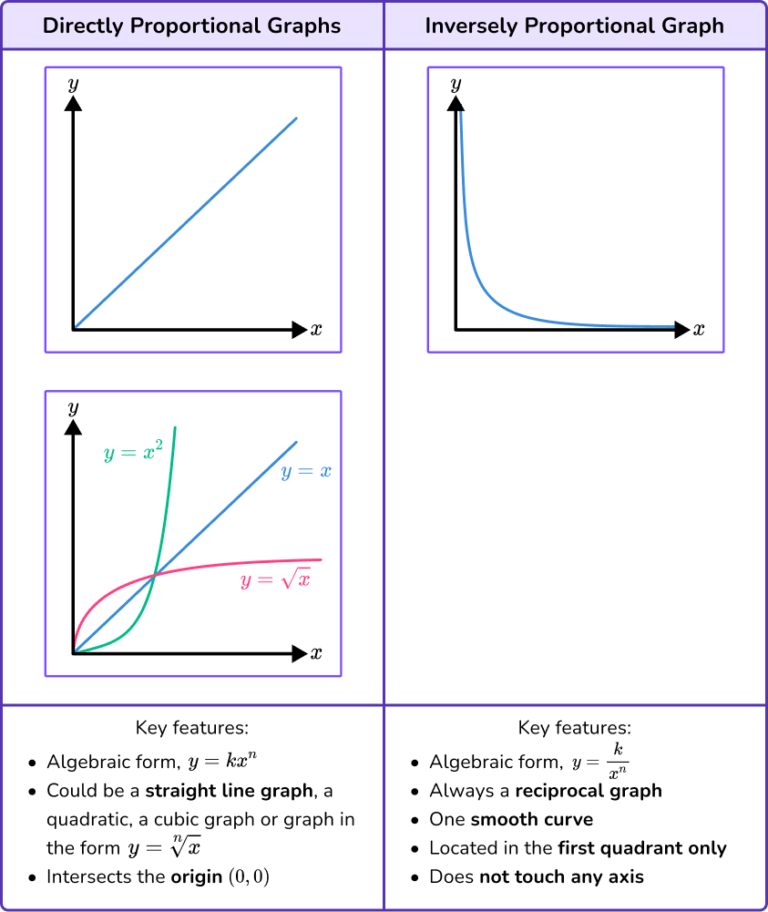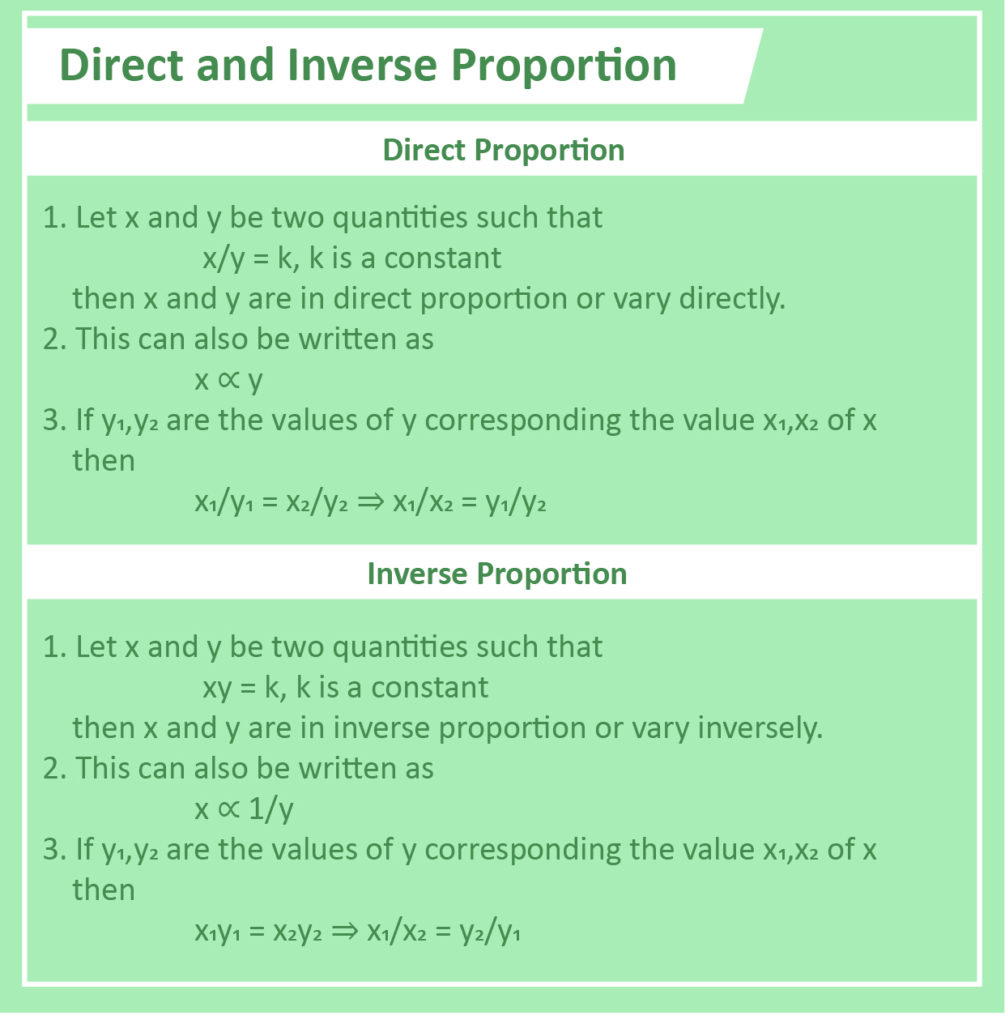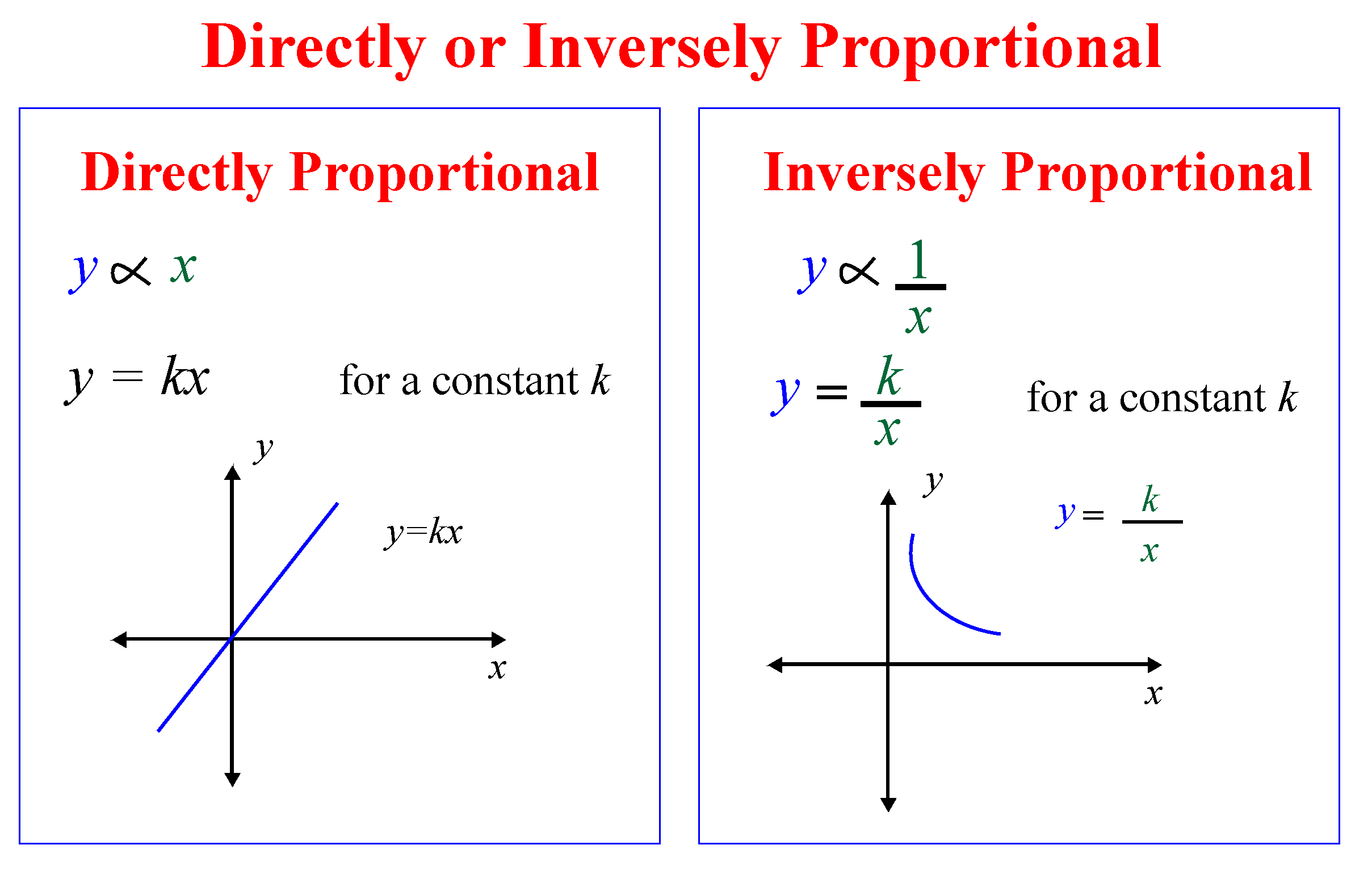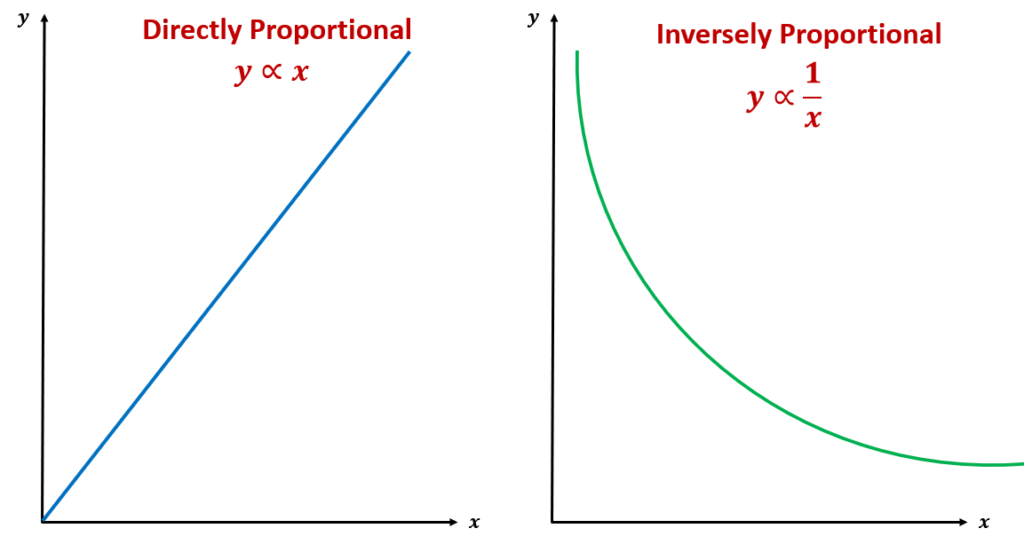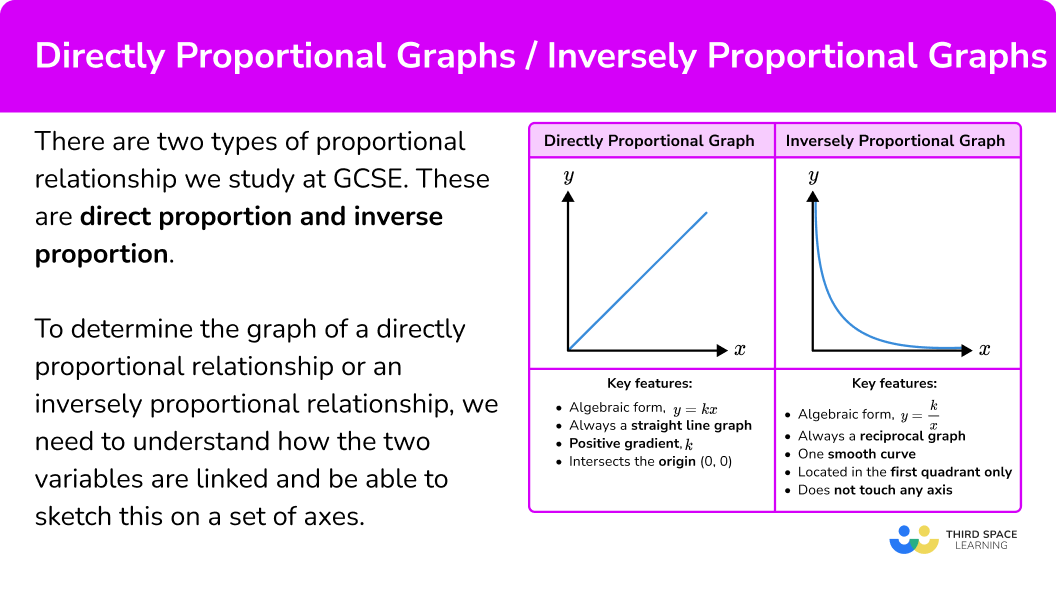Directly Vs Inversely Proportional
Directly Vs Inversely Proportional - For example, more workers on a job would reduce the time to complete the. Inverse proportion occurs when one value increases and the other decreases. We will learn about the more common one first. Learn the definitions, symbols, examples and formulas of direct and inverse proportionality. Find out how to solve problems involving constant of. Direct and inverse variation are two different types of proportional relationships that describe how quantities are related to each other. There are two main types of proportionality.
Direct and inverse variation are two different types of proportional relationships that describe how quantities are related to each other. Inverse proportion occurs when one value increases and the other decreases. Learn the definitions, symbols, examples and formulas of direct and inverse proportionality. Find out how to solve problems involving constant of. For example, more workers on a job would reduce the time to complete the. We will learn about the more common one first. There are two main types of proportionality.
Learn the definitions, symbols, examples and formulas of direct and inverse proportionality. Find out how to solve problems involving constant of. Inverse proportion occurs when one value increases and the other decreases. For example, more workers on a job would reduce the time to complete the. Direct and inverse variation are two different types of proportional relationships that describe how quantities are related to each other. There are two main types of proportionality. We will learn about the more common one first.
Directly / Inversely Proportional Graphs GCSE Maths
We will learn about the more common one first. Find out how to solve problems involving constant of. There are two main types of proportionality. Inverse proportion occurs when one value increases and the other decreases. Learn the definitions, symbols, examples and formulas of direct and inverse proportionality.
40 course 2 chapter 1 ratios and proportional reasoning worksheet
We will learn about the more common one first. Inverse proportion occurs when one value increases and the other decreases. There are two main types of proportionality. Learn the definitions, symbols, examples and formulas of direct and inverse proportionality. For example, more workers on a job would reduce the time to complete the.
Proportion Formula Examples What is Proportions Cuemath
We will learn about the more common one first. There are two main types of proportionality. For example, more workers on a job would reduce the time to complete the. Find out how to solve problems involving constant of. Learn the definitions, symbols, examples and formulas of direct and inverse proportionality.
PPT Directly and inversely proportional PowerPoint Presentation, free
Learn the definitions, symbols, examples and formulas of direct and inverse proportionality. For example, more workers on a job would reduce the time to complete the. Inverse proportion occurs when one value increases and the other decreases. We will learn about the more common one first. Find out how to solve problems involving constant of.
Label the following graphs as direct, inverse, or neither. I know that
For example, more workers on a job would reduce the time to complete the. Find out how to solve problems involving constant of. There are two main types of proportionality. We will learn about the more common one first. Learn the definitions, symbols, examples and formulas of direct and inverse proportionality.
COMPARING DIRECT & INVERSE PROPORTION YouTube
For example, more workers on a job would reduce the time to complete the. Inverse proportion occurs when one value increases and the other decreases. Direct and inverse variation are two different types of proportional relationships that describe how quantities are related to each other. We will learn about the more common one first. Find out how to solve problems.
meaning of directly and inversely proportional YouTube
Learn the definitions, symbols, examples and formulas of direct and inverse proportionality. Direct and inverse variation are two different types of proportional relationships that describe how quantities are related to each other. We will learn about the more common one first. Inverse proportion occurs when one value increases and the other decreases. For example, more workers on a job would.
inversely proportional graphs
For example, more workers on a job would reduce the time to complete the. Direct and inverse variation are two different types of proportional relationships that describe how quantities are related to each other. Find out how to solve problems involving constant of. Learn the definitions, symbols, examples and formulas of direct and inverse proportionality. We will learn about the.
Indirectly Proportional
Learn the definitions, symbols, examples and formulas of direct and inverse proportionality. We will learn about the more common one first. Find out how to solve problems involving constant of. There are two main types of proportionality. Direct and inverse variation are two different types of proportional relationships that describe how quantities are related to each other.
Direct Relationship Graph
Learn the definitions, symbols, examples and formulas of direct and inverse proportionality. There are two main types of proportionality. Direct and inverse variation are two different types of proportional relationships that describe how quantities are related to each other. Inverse proportion occurs when one value increases and the other decreases. For example, more workers on a job would reduce the.
Find Out How To Solve Problems Involving Constant Of.
There are two main types of proportionality. Inverse proportion occurs when one value increases and the other decreases. Learn the definitions, symbols, examples and formulas of direct and inverse proportionality. We will learn about the more common one first.
For Example, More Workers On A Job Would Reduce The Time To Complete The.
Direct and inverse variation are two different types of proportional relationships that describe how quantities are related to each other.
